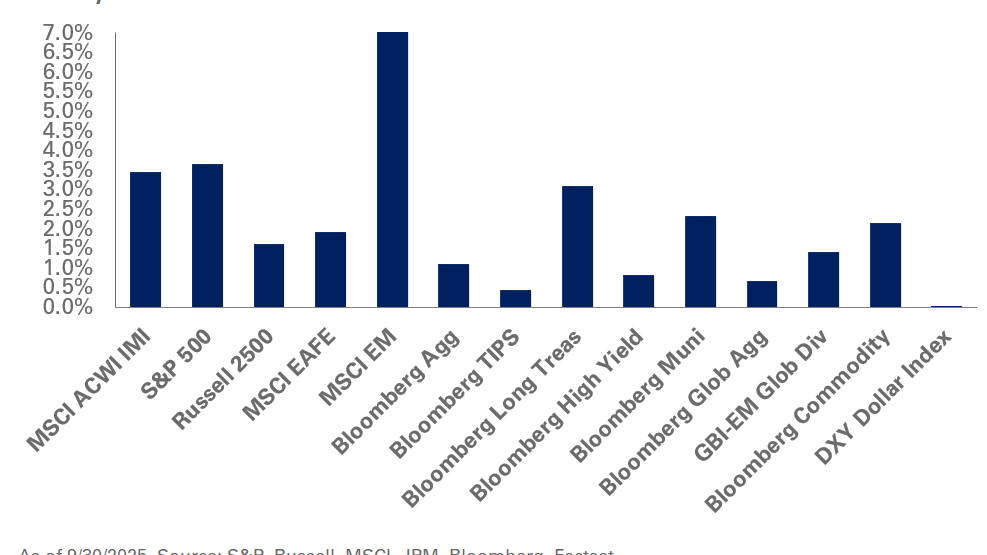In a Wealth Management Op-Ed, the Co-Head of NEPC’s Impact Investing Committee, Krissy Pelletier, defines the three pillars that will be the largest drivers of investment success.
Three factors that may determine where the industry is going.
As we prepare to enter a new decade of investing, it’s time to throw out the old handbook. As investment advisors strive to add value and preserve capital, the industry needs to reboot to meet the seemingly contradictory demands of the new-age investor. This investor expects more but wants to pay less, demands simplicity even as investment products and strategies are increasing in complexity, seeks partnership in addition to leadership, wants efficiency but not at the cost of accuracy, seeks monetary gains but also social impact, and is investing for the long haul but still strives to be adaptable and agile.
In this new world order, investors’ perceptions of risk, return and what drives them to invest have markedly shifted. Factors that have shaped investors’ perceptions and drivers include paradigm shifts in technology, the mayhem caused by the global financial crisis, higher costs of living and education, greater awareness of the environment, concern around gender and racial inequities, and longer life expectancies. These far-reaching and varied influences boil down into three future fundamentals of investing: sustainability, diversity and inclusion, and innovation.
Sustainability
Investors across the globe are embracing the power of their investment dollars to go beyond providing a financial return. For some, sustainability means impact investing, that is, aligning their organization’s mission to their portfolio; for others, it could mean incorporating material strategic information—environment, social and governance (ESG) factors—that look beyond financial statements when underwriting a new investment. Regardless of the term used, the intent is the same: investors are engaging on global issues deliberately and thoughtfully. Sustainable, responsible and impact investing in the United States grew to $11.6 trillion in 2018, a 44% jump from the $8.1 trillion reported in 2016. Companies are responding too by redefining their purpose such that their actions benefit all stakeholders and not just shareholders. Once the domain of philanthropies, this approach is now a widely implementable idea that aims to achieve both a financial gain and a societal contribution. Its execution should be thoughtful and deliberate, and its efficacy measurable.
Diversity and Inclusion
Similarly, it is no longer enough to have diversity just within asset classes, investment strategies, geographies, capitalizations and sectors. Investors are demanding greater diversity and inclusion within their consulting and investment teams as a growing and substantial body of research points to the positive and, in many cases, superior investment performance brought about by diversity and inclusion. Companies in the top quartile for gender diversity on their executive teams were 21% more likely to have above-average profitability than companies in the fourth quartile; for ethnic and cultural diversity, top-quartile companies were 33% more likely to outperform on profitability. Investment teams also want their advisors and portfolio managers to be more representative of the constituencies they serve. In a crowded marketplace of mostly generic investment products, investment teams need diversity of thoughts, ideas and experiences through diversity in gender, race, sexual identity, religion, and social and economic backgrounds.
Innovation
It is an oversimplification to think that innovation is just about technology. To be sure, technology does play a key role in increasing efficiencies, be it to provide better services or drive down costs. In the aftermath of the financial crisis, there has been greater vigilance (and, rightfully so) on the part of investors to safeguard their assets. They not only want more access in real time to the performance of their investments, but also are hungry for tools and applications that let them understand and evaluate their portfolios. Additionally, they are also seeking greater transparency into how fees are structured and looking for ways to lower costs related to managing and servicing investments. There’s no doubt about it: advancements in technology are necessary to keep up with the changing investment world.
Innovation also encompasses new investment ideas and tools to evaluate them. Smart investing needs to keep pace with disrupters such as the increasing use of artificial intelligence and big data as investment aids. A heavy focus on past performance carries the risk of missing out on fresh strategies and young teams. While the lengthy track record of a seasoned manager is informative, it may not necessarily be indicative of future performance. To evaluate new funds, ideas and the next generation of investment opportunities, it’s critical to use an inventive blend of proprietary quantitative and qualitative metrics to evaluate to the future success of an investment.
These future fundamentals of investing touch every aspect of the investment process and community. For an in-depth look at the three future fundamentals of investing: sustainability, diversity and inclusion, and innovation, click here. The continued success of our profession depends on how effective investors are at integrating these fundamentals of sustainability, diversity and inclusion, and innovation into their portfolios. It is time to step into 2020 with this new handbook.
Kristine Pelletier is a Partner and Co-Head of the Impact Investing Committee at NEPC



